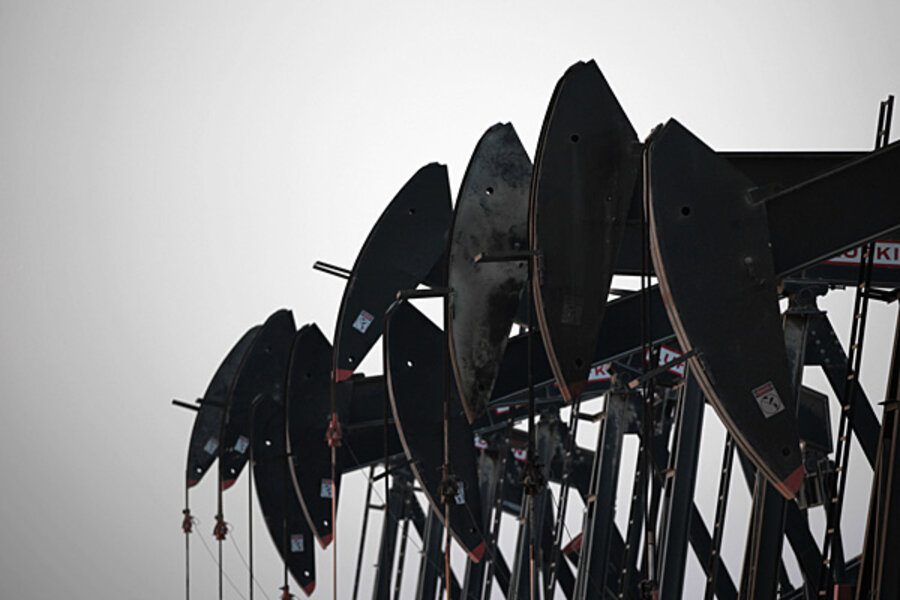Oil prices fall below $100. Still good for US economy?
Loading...
High supply and low demand are pushing US oil below the $100 mark after months of prices clinging to triple digits – and prices could fall further still.
Robust oil inventories are driving prices down, along with hopes that easing relations with Iran could bring additional oil onto the global market. Falling oil prices typically boost US economic growth as cheaper energy helps consumers and industry's bottom lines. And, despite the hit that the booming US oil industry will take, it's still true that cheaper oil is a net positive for US growth.
It would take a much bigger price plunge to derail the boom. That isn't likely to happen anytime soon, most analysts suggest.
"The oil market remains well-supplied as production in the US has increased to just shy of 7.9 million barrels per day, the highest level since 1989," Andrew Lipow, president of Lipow Oil Associates in Houston, says in a telephone interview. Mr. Lipow also cited "record production out of Saudi Arabia and the market anticipating that some progress might be made between Iran and United Nations on their nuclear program."
Prices dipped below $100 Monday for the first time since July, hitting a low of $95.95 Thursday. They have since rebounded a bit, rising 37 cents Friday to $97.48 in midday trading.
Average US gas prices dropped a cent to $3.32 per gallon Friday, according to AAA, the national motor club based in Heathrow, Fla. That's down four cents from a week ago.
The drops came as US crude oil stocks jumped a larger-than-expected 5.23 million barrels for the week ending Oct. 18, according to the US Energy Information Administration (EIA). That puts inventories at 10 percent above the five-year average, according to an analysis by Platts.
A tepid September jobs report released this week curbed optimism about US economic growth, putting added downward pressure on oil prices on projections of lower demand. The US economy added 148,000 jobs in September, according to government data, less than the 180,000 many economists expected.
Iran's Tuesday announcement that it has halted uranium enrichment to bomb-grade levels improved the outlook for US-Iran relations. Sanctions have crippled Iran's oil industry, and investors hope an easing of tensions could open up Iran's vast oil reserves to the West. The country has the world's fourth-largest proven oil reserves and the world's second-largest natural gas reserves, according to EIA.
Oil prices remain historically high, but the recent drop is a boost for consumers and companies who have been waiting for prices to reflect increased production in North Dakota, Texas, and other shale formations across the US. Those sites are at risk if prices drop too low, however.
"Fracked oil is high cost oil," Morgan Downey, a commodities trader based in New York, writes in an e-mail. "There is a cost curve, with some able to produce under $50 and some only if oil prices are above $75 per barrel. That's what many forget: the boom in US tight oil supply exists only because oil prices are high. If prices drop to $50 or less for an extended period, we could see US oil production contract and the boom would be over."
Oil could dip to $93 a barrel by the end of the year, Lipow projects, with retail gasoline hitting $3.20. Even then, prices would remain well above the break-even point, in a sweet spot that helps consumers while keeping domestic oil production profitable.
"Low oil prices are still a good thing for the US economy," Jamie Webster, an energy analyst with IHS PFC Energy, a global consulting firm, writes in an e-mail. "While unconventional oil is relatively expensive oil to produce, we are still not in the range where investment slows measurably, so you still have strong support for oilfield jobs."






